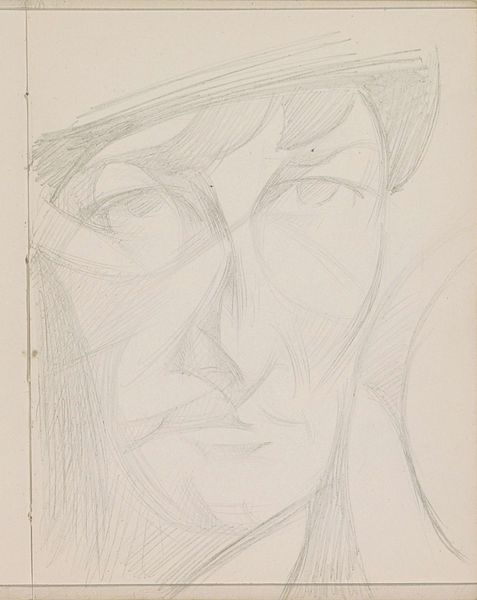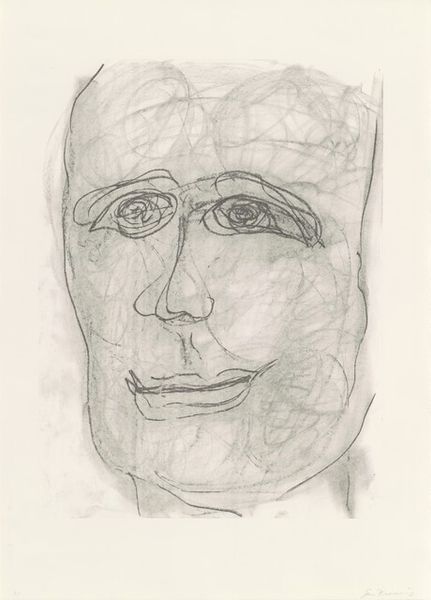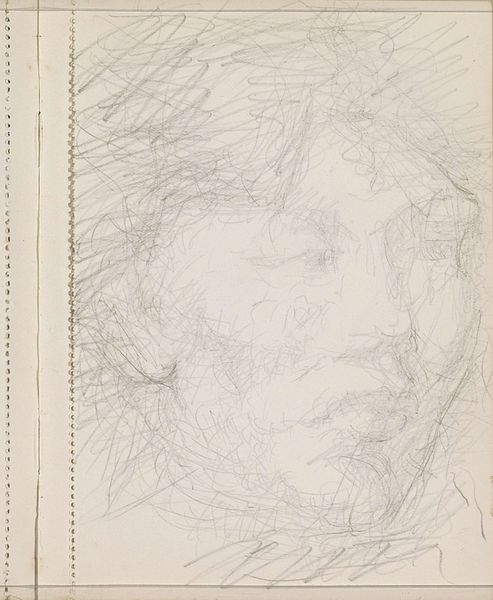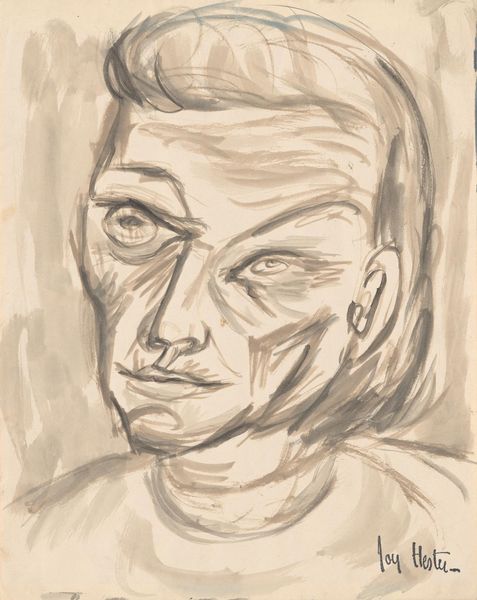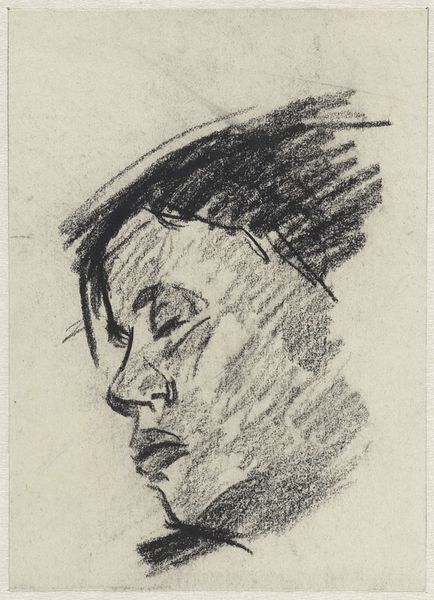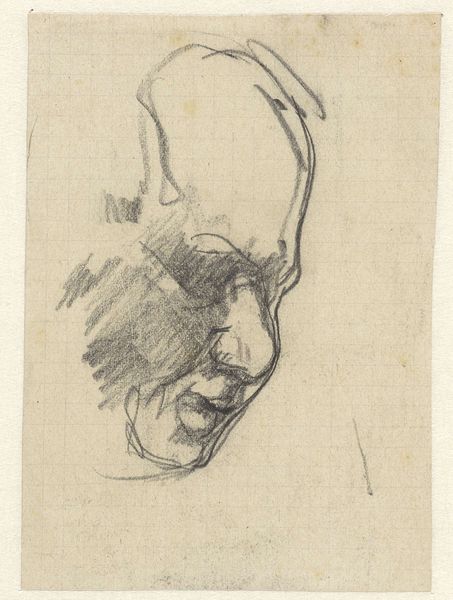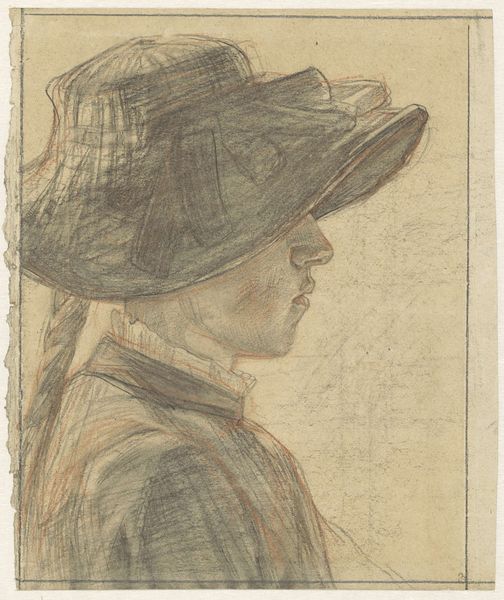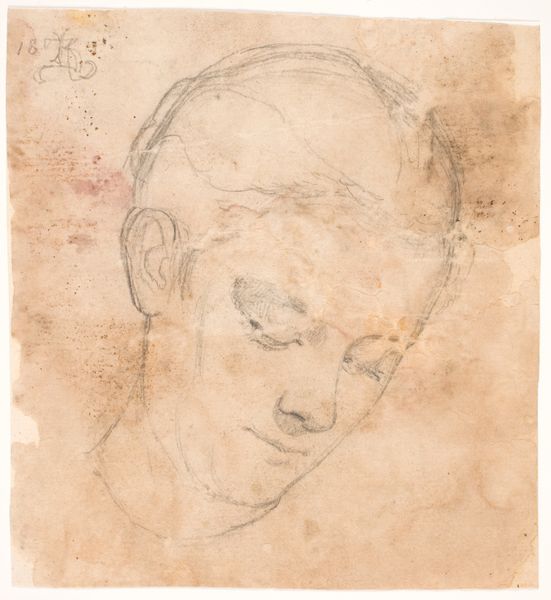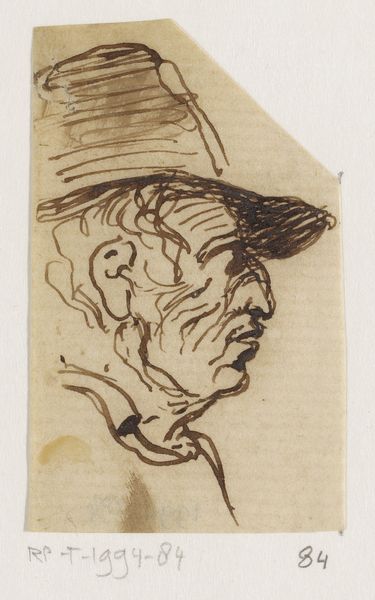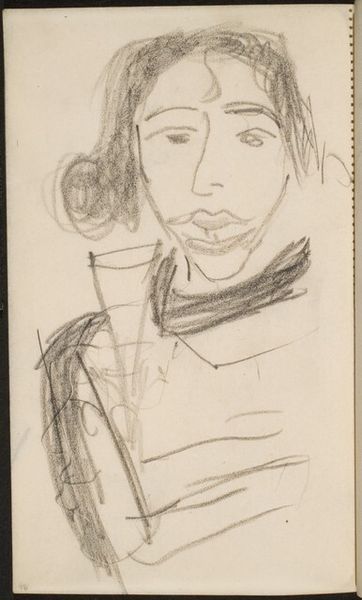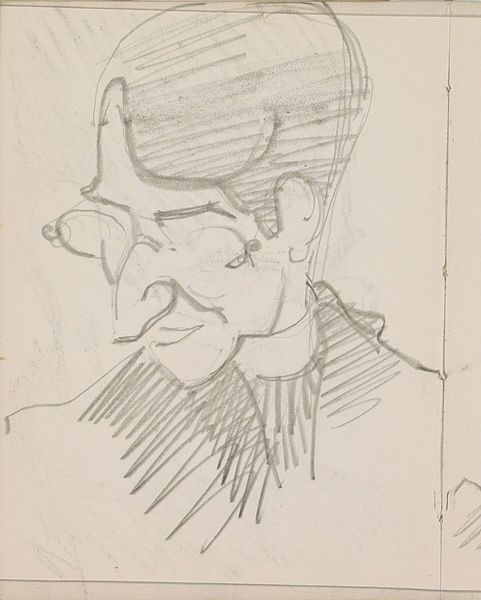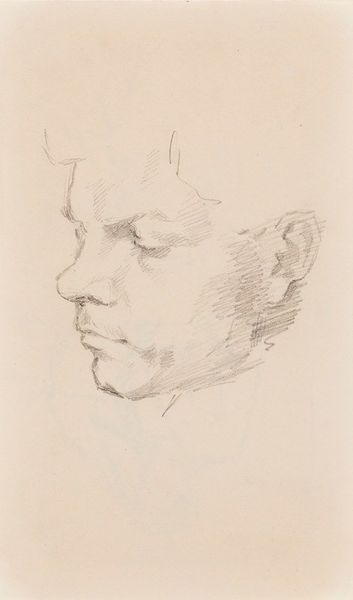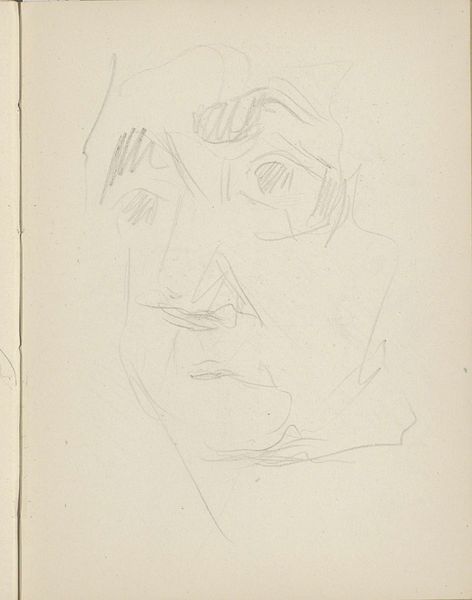
drawing, pencil
#
portrait
#
pencil drawn
#
drawing
#
pencil sketch
#
figuration
#
pencil drawing
#
pencil
#
line
#
portrait drawing
Copyright: Public domain
Editor: Here we have Albin Egger-Lienz’s "Study to ‘the Resurrection’," a pencil drawing from 1923. It's a striking image; the stark lines and somber expression give it such a heavy mood. How do you interpret the cultural context around a preparatory sketch like this, especially given its title? Curator: Well, first it’s important to remember where this was created: Austria in the early 1920s, a nation grappling with the aftermath of World War I and societal upheaval. Consider how artistic themes would be influenced by these factors. Is this “resurrection” literal or symbolic? Think about the context of widespread loss and disillusionment, how Egger-Lienz may have used religious imagery to comment on a broken society needing renewal. What do you observe about the subject's expression, its impact in conveying such sentiment? Editor: That makes me see the drawing completely differently. I initially focused on the artistic technique, but viewing it through that post-war lens... It definitely deepens the emotional resonance. It's like he’s not just sketching a figure but capturing a collective feeling. Curator: Exactly! And who decides what and how to portray is key, when we consider how public perception gets shaped in interwar societies through art. We should ask ourselves what role should art take in times of profound trauma? The decision to exhibit preliminary sketches offers the viewers also an interesting perspective into the artist’s production. Editor: It’s interesting to think about this piece not just as art, but as a reflection of historical trauma and the artist's potential commentary on the state of society. Curator: Indeed, recognizing these layers allows a richer engagement with the artwork's significance. It moves us past technique into questions about the societal responsibilities of art, challenging assumptions about the neutrality of artistic expression itself.
Comments
No comments
Be the first to comment and join the conversation on the ultimate creative platform.
